kanagawa, winter
Discover Winter Magic: Kanagawa’s Top 5 Destinations!
Oliver McMahon
Posted on December 11, 2021
Share:
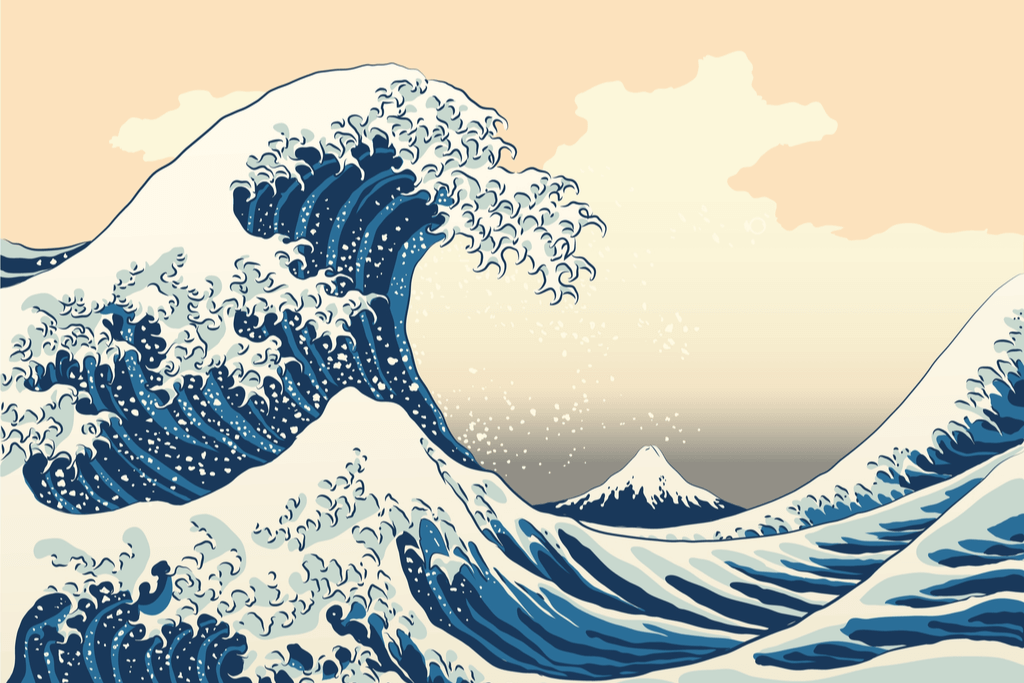
Despite being featured in Japan’s most famous art piece, The Great Wave off Kanagawa, Kanagawa prefecture gets lumped together with Tokyo all too often. This is possibly due to how close it is to Tokyo. That being said, Kanagawa has plenty of fun places to visit in winter!
Of course, much like Tokyo, Kanagawa has attractions like illuminations and Christmas markets. However, today, let’s talk about places to visit in Kanagawa that are only enhanced in the cold winter months.
Where in Japan is Kanagawa?
Kanagawa is a prefecture located in the Kantō region of Japan. Situated just south of Tokyo, Kanagawa offers a vibrant blend of urban landscapes, picturesque coastlines, and rich cultural heritage. This diverse prefecture encompasses iconic cities such as Yokohama, Kawasaki, and Kamakura, each with unique charm and attractions.
From the bustling streets of Yokohama to the tranquil temples and historical sites of Kamakura, Kanagawa offers visitors a captivating blend of modernity and tradition.
Whether you’re seeking breathtaking views of Mount Fuji, exploring ancient temples and shrines, or indulging in delicious local cuisine, Kanagawa is a must-visit destination looking to enjoy the vibrant beauty of Japan.
Hakone Onsens: A relaxing place to visit Kanagawa in winter!
Hakone is one of Kanagawa’s most popular places for a day or weekend trip. This town sits in an active volcanic area with attractions like the volcanic valley, shrines, and museums. However, the real reason many people visit this place in winter is simple–onsens (hot springs). The town has 17 officially recognized onsens peppered around the area and many traditional Japanese inns, or ryokan.
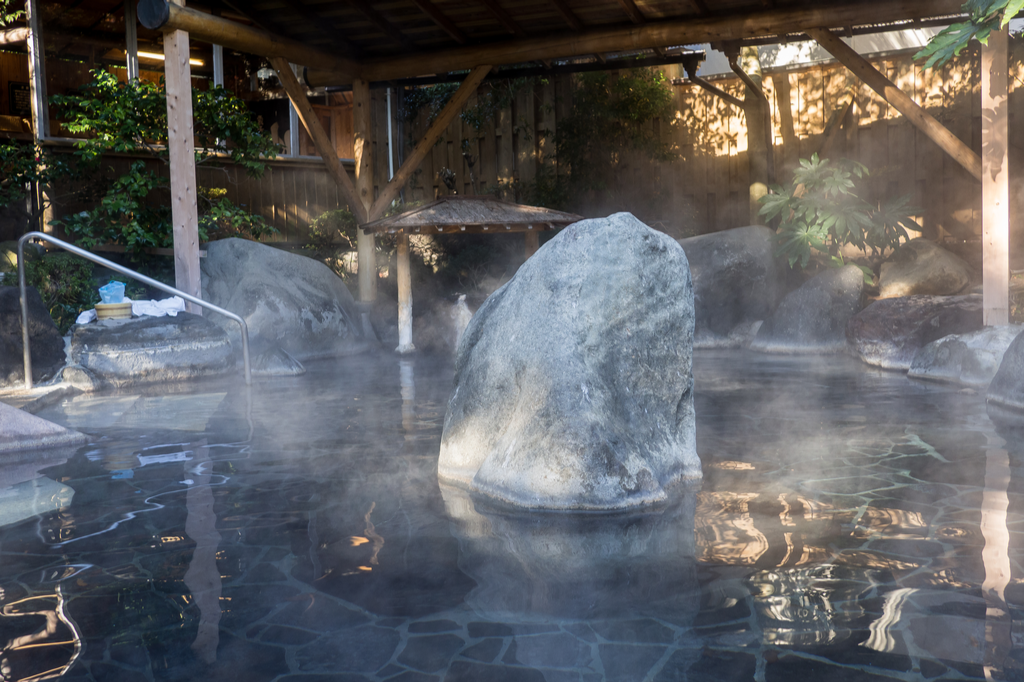
The warm water, provided by the volcanic activity, gives a nice break from the cold winter weather and relaxation to all looking to escape from work. These onsens provide a relaxing soak during the coldest season.
Outdoor onsens, especially, are great as you can experience the winter cold, the snow cover on the nature outside the bath, and the warmth of the spring. Some even have a fantastic view of Mt. Fuji.
Suppose the nudity part of Japanese bath culture is a deterrent for you. In that case, there are also private onsens at the different ryokan, so you can experience beautiful scenery and a hot bath with as many or as few people as you want.
Odawara Castle: A historical place to visit Kanagawa in winter!
Initially built in the Kamakura period (1185-1333), Odawara Castle has over 600 years old history. The castle has been through many changes, especially since Toyotomi Hideyoshi awarded the castle to Tokugawa Ieyasu, his leading general. Despite surviving attacks and earthquakes, it has stood the test of time.
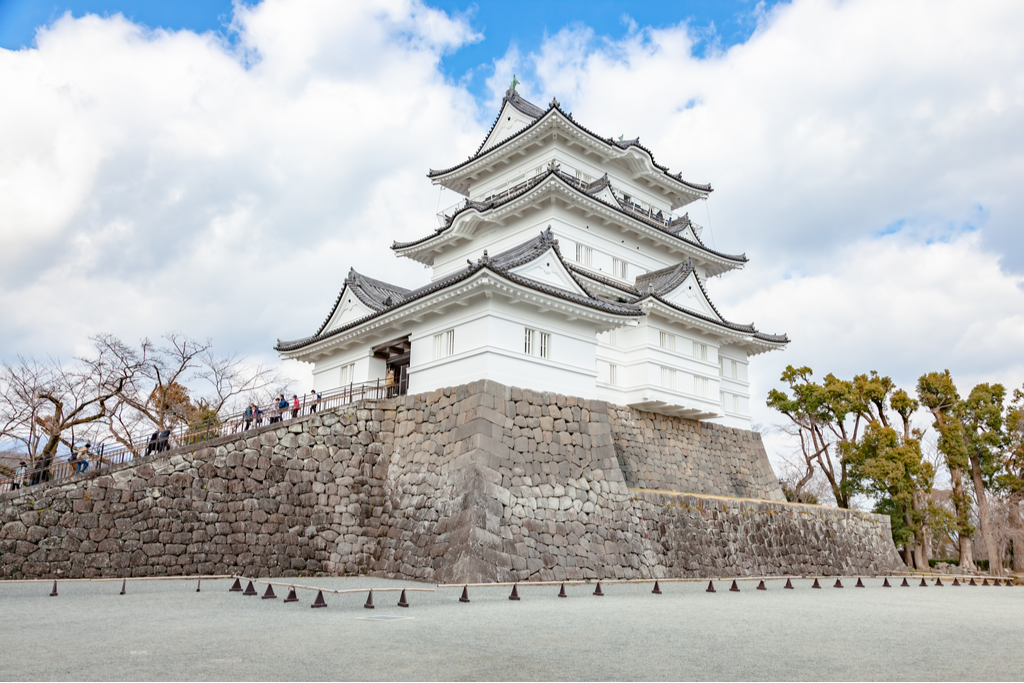
The castle may not be huge, but the fortress grounds are massive. Nowadays, not only can you enjoy an exhibit inside the castle, but you can also learn about ninjas and samurai on the castle grounds. A ninja museum is housed on the grounds, so visitors can learn about ninja skills and culture and even experience being a ninja. Additionally, the small samurai museum holds samurai armor and swords.
Not only is it the best example of a castle in the Tokyo area, but it’s also wonderful when it snows. The way the snow sits on the castle and the lights displayed at night is truly a sight anyone can enjoy, history buff or not.
Discover Japan’s rich culture via its regional culinary traditions: Sakuraco sends traditional sweets & snacks from across Japan to your door.
Great Buddha of Kamakura
Our next stop is in the coastal town of Kamakura, which was once the political center of Japan before the 14th century. These days, Kamakura is considered the Kyoto of Eastern Japan because of the many temples, shrines, and historical monuments that provide a traditional escape from city life. People also tend to enjoy Kamakura’s beaches in summer.
However, in winter, the Great Buddha is one of the best places to visit in Kamakura. This Great Buddha stands–or sits–at 11.4 meters tall and was the second tallest Buddha statue for quite some time, second only to the one in Nara.
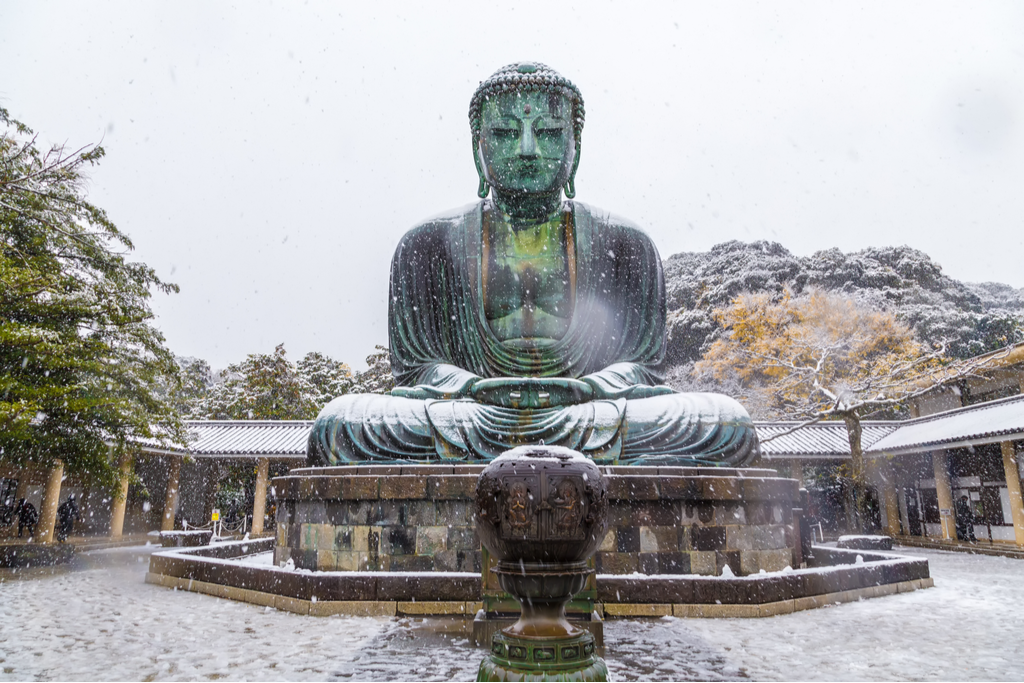
Initially built in 1252, the Great Buddha statue was in a large temple hall. However, the original temple building was destroyed by natural disasters. As a result, the statue was relocated outside of its current location. This sets it apart, as most Great Buddha statues remain inside. Moreover, it became a marvel to behold during the snowy winter. Strangely, it comes to life and looks like a man meditating in the snow. A genuinely fantastic winter view!
Yokohama
Narrowing down a single place in Japan’s second-largest city can be tricky. There is just so much to see and do! Yokohama has plenty of attractions, such as the entertainment area Minato Mirai 21, amusement parks, aquariums, and zoos.
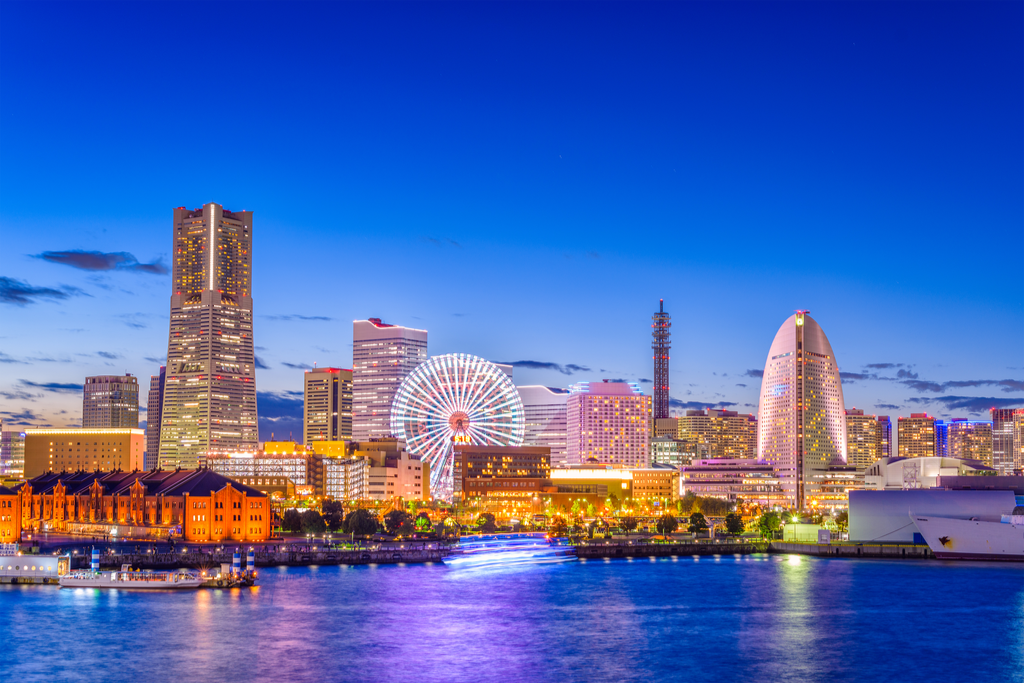
The Noh Theater is one of Japan’s oldest stages for noh, a traditional performing art with masked actors and music. In addition, you can visit the Cup Noodle Museum and the Ramen Museum. These places are perfect for learning about ramen and escaping the cold.
Speaking of ramen, Yokohama is famous for its delicious Yokohama Iekei Ramen. It’s an animated version of tonkotsu ramen featuring soy sauce and thick, straight noodles. In Yokohama Chinatown, you’ll find numerous shops, restaurants, and food stalls offering various delectable treats. From steamed buns to ramen, it’s the perfect place to indulge and warm up on a cold day.
Japan Open-Air Folk House Museum
The Japan Open Air Folk House Museum comprises 25 preserved buildings from the Edo Period (1603-1867). However, these buildings are not just from Kanagawa–they come from many different areas of Japan.
Some of their most famous buildings come from the Shirakawago and Gokayama areas, on the border of Toyama and Gifu prefectures. These areas are World Heritage Sites, famous for their thatched roofs. They’re trendy in winter thanks to the beautiful way the snow stacks on top of them. If you are pressed for time, this open-air museum is an easily accessible way to glimpse this famous sight without a long trip.
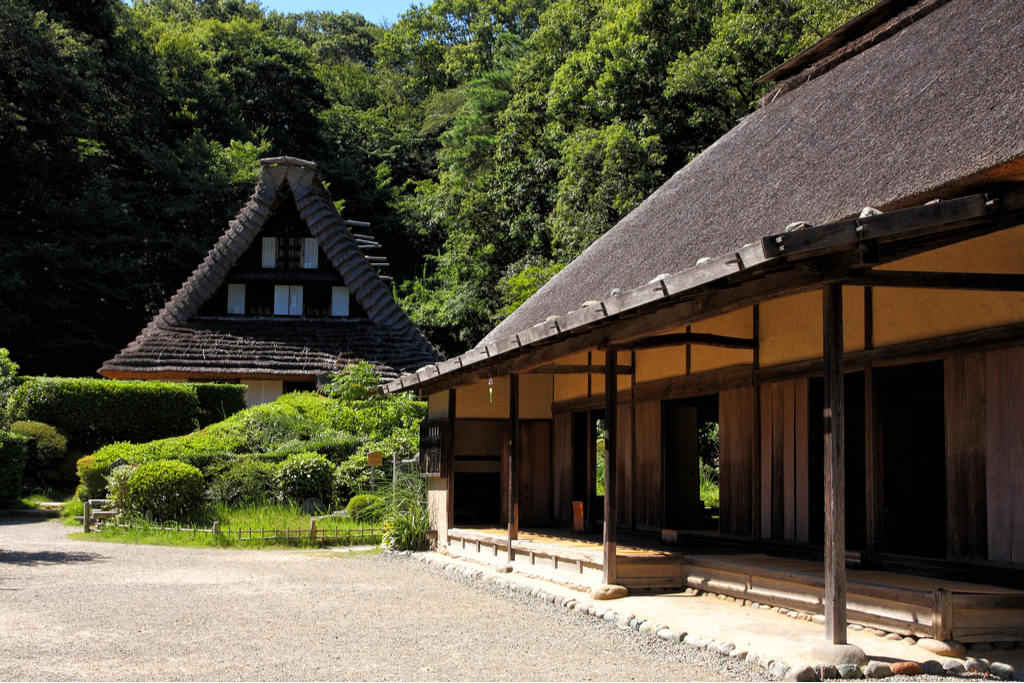
They hold workshops throughout the different buildings that feature traditional Japanese crafts and activities. Among those offered are bamboo craft making, indigo dyeing, folk storytelling, and even mochitsuki (rice cake pounding), a New Year’s tradition.
Kanagawa is a beautiful prefecture with plenty of incredible sights and delicious food to enjoy, and it only gets better in the winter! Have you already visited any of these places? Are there any other reasons you would visit Kanagawa in the winter? Let us know in the comments below!

Discover authentic flavors with Sakuraco
Get Sakuraco 

Discover authentic flavors with Sakuraco
Get Sakuraco 
Related Articles

Steam Train in Shizuoka: Riding the Oigawa Railway
For travelers who love history, beautiful views, and cozy retro vibes, this steam train is one of Shizuoka’s most charming treasures, with some of the best views. If you want to know more about this train, keep reading below!

Nara Japan: The Amazing Legend of the Sacred Dragon
In Japanese culture, dragons are spiritual beings that represent strength, prosperity, and a harmonious balance with the natural forces. Nara, Japan, has a unique story associated with sacred ponds and revered shrines throughout the region.

Nambu Tekki: Morioka’s Amazing Iron Craft
In the historic city of Morioka, Iwate Prefecture, a craft with over 400 years of history continues to captivate with its rustic beauty and practical charm. Nambu tekki, or Nambu cast iron, refers to traditional ironware, such as teapots, kettles, and decorative pieces, that embody the spirit of Tohoku craftsmanship.

Ebisu: The Cheerful Guardian of Luck and Prosperity
Religion in Japan involves a dizzying array of spirits and beings. These gods are inspired by ancient tales and used to symbolize nature’s bounty. However, they also profoundly impact daily life and are often sought out for help in challenging times


